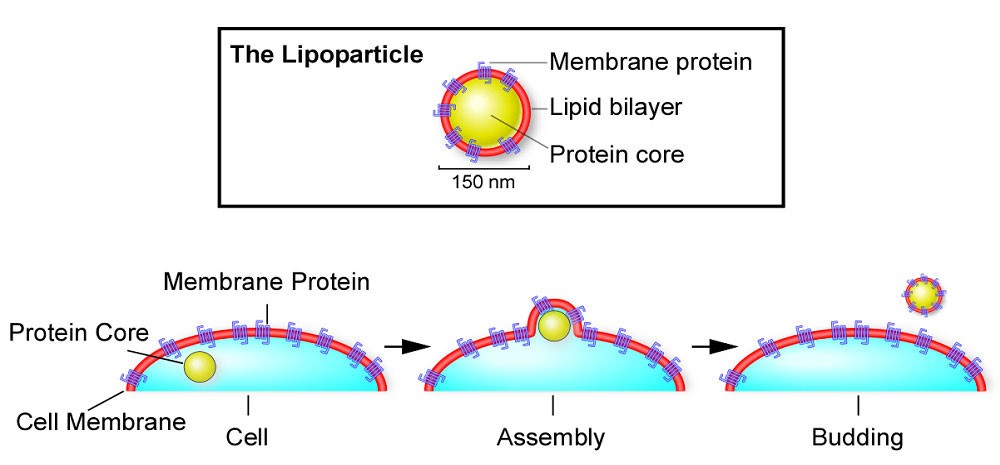Virus-like Particle Construction
The formation of virus-like particles (VLPs) is a result of self-assembly of one or several types of viral structural proteins, such as Envelope or Capsid. The component proteins can originate from different viruses or be recombinantly expressed. Various systems have been used in the successful construction of VLPs from different sources including bacterial, yeast, insect cells, plant and mammalian hosts. VLPs are non-infectious because they contain no viral genetic material. VLPs include a number of biological objects, such as uncharacterized structures with viral morphology, empty structures of viral origin, self-assembled gene products, etc. VLPs also provide a highly efficient vaccine platform and a wide variety of VLPs have entered pre-clinical and clinical development.
Lipoparticles are specialized VLPs that incorporate high concentrations of target membrane proteins in their native conformation. A lipoparticle usually consists of a retroviral core protein (Gag) and a conformational-complex membrane protein, co-expressed, assembled and released from host cells. Gag core proteins self-assemble at the plasma membrane, where they bud off and capture target membrane proteins (Figure 1). Since the membrane proteins within lipoparticles are derived directly from the cell surface without mechanical disruption or detergents, the native structure and orientation of the membrane proteins are retained.
 Figure 1. Schematic diagram of the lipoparticle
Figure 1. Schematic diagram of the lipoparticle
Lipoparticles have many advantages in isolating membrane proteins: firstly, they are homogeneous and physically well defined, capable of maintaining the native structures of target membrane proteins in high densities; secondly, they can be used to detect membrane protein interactions and therefore have wide applications in antibody screening, phage and yeast display, immunogens production and ligand binding assays.
Creative Biostructure uses MemPro™ virus-like particles (VLPs) to efficiently isolate membrane proteins in the form of lipoparticles.
Please see the list of membrane proteins provided by Creative Biostructure.
Please feel free to contact us for a detailed quote!
Ordering Process
References
- Zeltins A. (2013) “Construction and characterization of virus-like particles: a review”. Mol Biotechnol 53(1):92-107.
- Kushnir N, et al. (2012) “Virus-like particles as a highly efficient vaccine platform: diversity of targets and production systems and advances in clinical development”. Vaccine 31(1):58-83.
- Banik S. (2009) “Antibody Strategies for Membrane Protein Targets”. Drug Discovery & Development 12(9):14-17.

